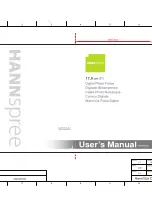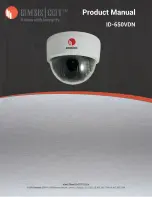
CV-A10 CL and CV-A70 CL
6.4.5. Pulse Width Control Trigger Mode
In this mode the accumulation time is equal the trigger pulse width. Here it is possible to have
long time exposure. The maximum recommended time is <120 frames.
The accumulation can be LVAL synchronous or LVAL a-synchronous.
To avoid up to 1LVAL time jitter in LVAL synchronous accumulation it is recommended to
synchronize the trigger to HD. (See fig. 23.).
Use LVAL synchronous accumulation (LS=0) for highest trigger rate. Here a new exposure can be
started while the previous is read out. The trigger pulse should end >2 LVAL after FVAL goes low.
The resulting video signal will start to be read out after the trigger rising edge.
For timing details, refer to fig. 13. through fig. 17. and fig. 29.
To use this mode:
Set function:
Trigger mode to “Pulse width control”.
TR=2
Scanning
SC=0
through
3
Vertical
binning.
(CV-A10 CL only)
VB=0 through 3
Horizontal
binning.
(CV-A10 CL only)
HB=0 through 3
Accumulation LVAL synch. or a-synch.
LS=0, LS=1
Other functions and settings
Input:
Ext. trigger. Camera Link or 12 HiRose
TI=0, TI=1
Ext. HD in on pin 6 on 12-pin connector.
(If used).
Important notes on using this mode
External sync system should follow the camera scanning system.
To
avoid
≤
1 LVAL jitter if LS=1, ext. HD/Trigger phase relations as shown in fig. 23.
Trigger pulse width >2 LVAL to <120 frames
If LS=0, the minimum trigger interval >(1 FVAL + 3 LVAL).
If LS=1, the minimum trigger interval >(trigger width + 1 FVAL + 2 LVAL).
Fig. 29. Pulse width control. LVAL synchronized.
- 19 -
















































